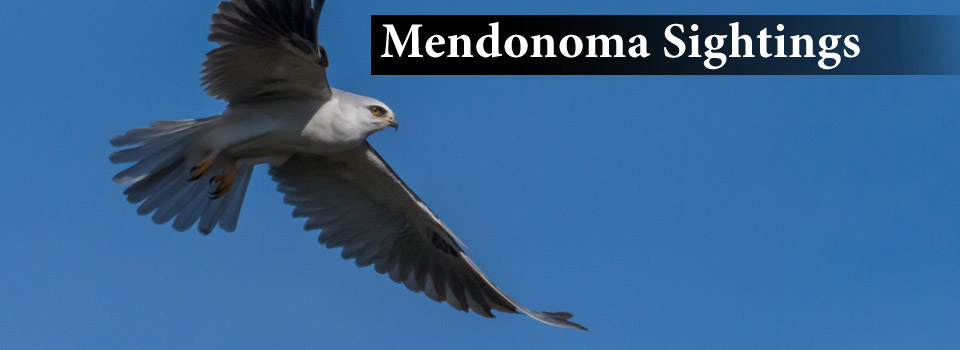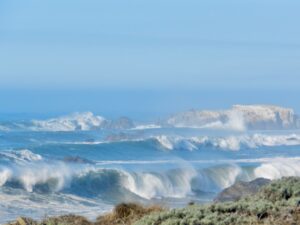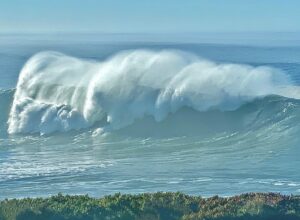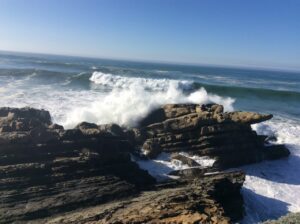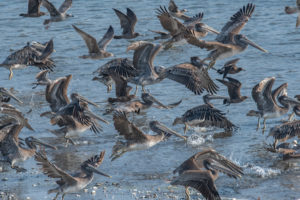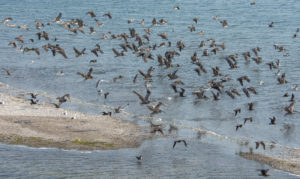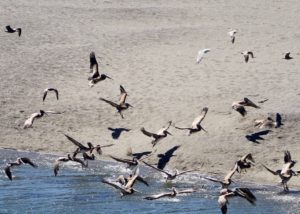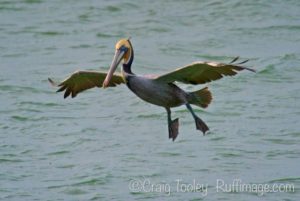Shari GoForth-Eby noticed a group of California Sea Lions off of Gualala Point Beach from the Gualala Bluff Trail.
 Rick Denniston witnessed this too.
Rick Denniston witnessed this too.
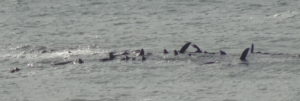 But there is an interesting story here, told by Scott Mercer.
But there is an interesting story here, told by Scott Mercer.
Scott wrote, “We heard from Shari Goforth-Eby of an unusual sight by the Gualala Bluff Trail. We arrived and saw 15 or more chatty California Sea Lions perched on a large object, and drifting with the strong wind. They were right along the edge of the beach managing to stay off the beach. After much looking and guessing we all finally agreed that the object was not a dead whale [whew] and was not a tree, or a log, but a raft of kelp. At one point the group and their raft had drifted north and out of our sight. To our amazement, and amusement, the Sea Lions came swimming rapidly back along the beach barking loudly, not alone, but bringing their kelp raft along with them.”
Sea Lions feed on invertebrates that live in kelp forests. They form rafts for several reasons -to rest together, and for thermoregulation. They lift their flippers out of the water and have the sun warm them up. I have never heard of them bringing a patch of kelp with them. That’s wonderful to know!
Thanks to Shari and Rick for allowing me to share their photos with you here.
oh my, we are having a lovely day on the Mendonoma Coast. Big swells are evident on the Pacific Ocean and the waves are crashing. Temps in the mid 60's - a fine winter day.
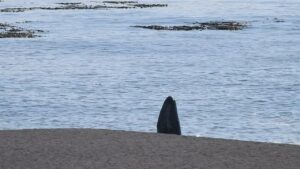 Here's the whale surfaces while a [lucky] person with their dog watches.
Here's the whale surfaces while a [lucky] person with their dog watches.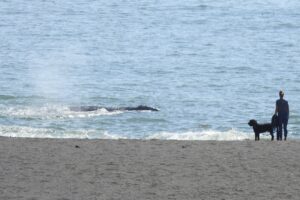 And here's a photo of the Gray Whale's tail.
And here's a photo of the Gray Whale's tail.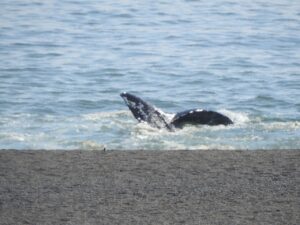 What a wonderful experience for the people on the beach...and for Eric! Thanks to Eric for allowing me to share his photos with you here. Another great photo, of a man watching while this whale spyhops, will be in tomorrow's Independent Coast Observer.
What a wonderful experience for the people on the beach...and for Eric! Thanks to Eric for allowing me to share his photos with you here. Another great photo, of a man watching while this whale spyhops, will be in tomorrow's Independent Coast Observer.